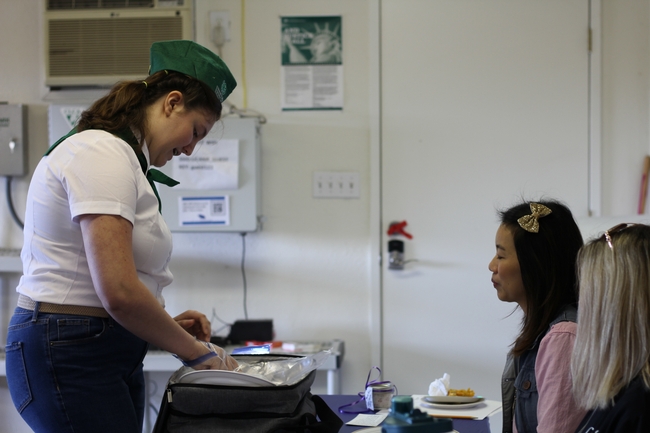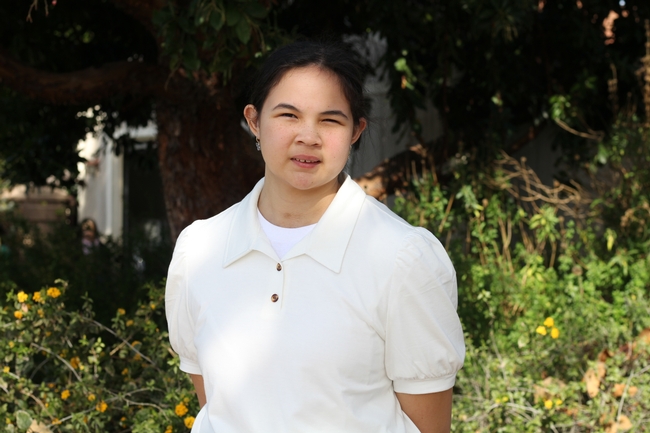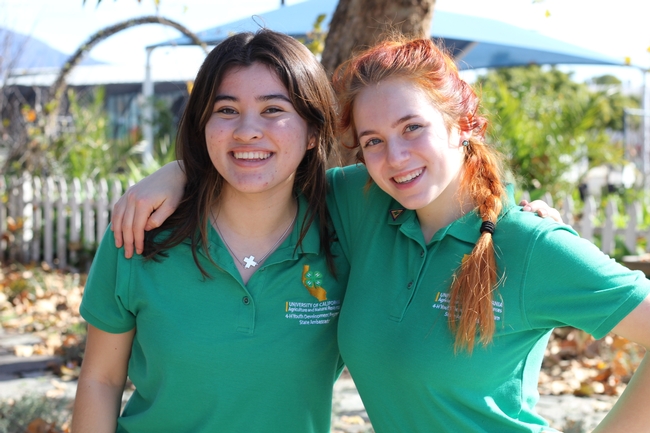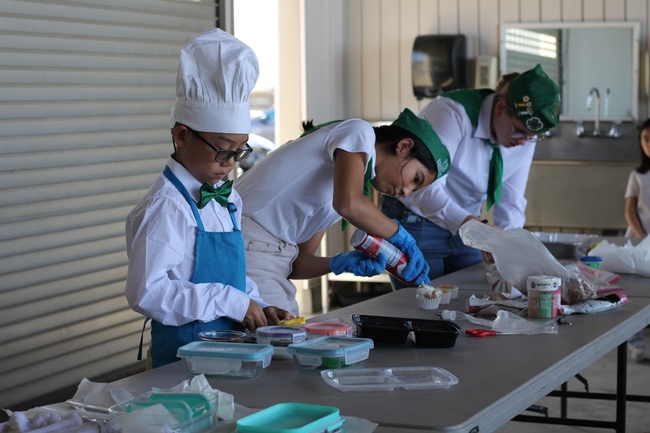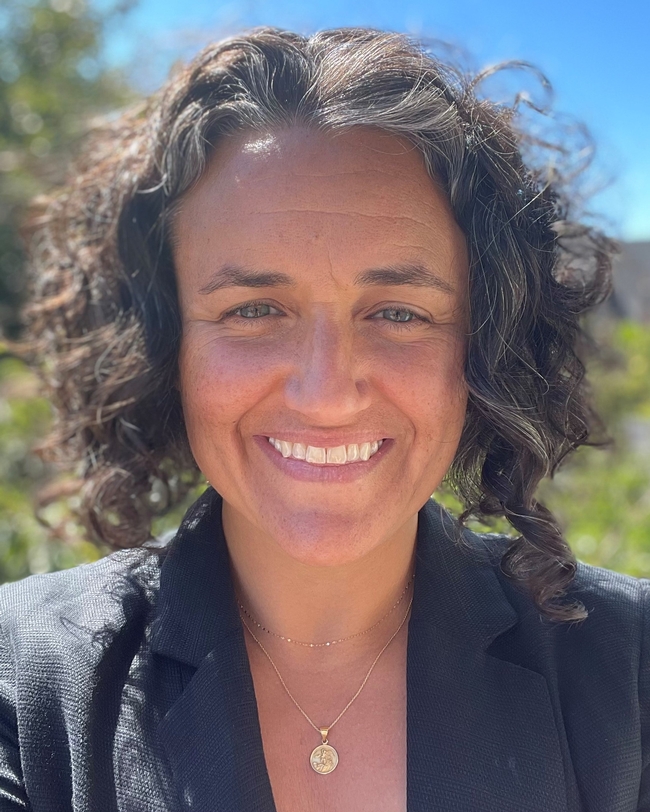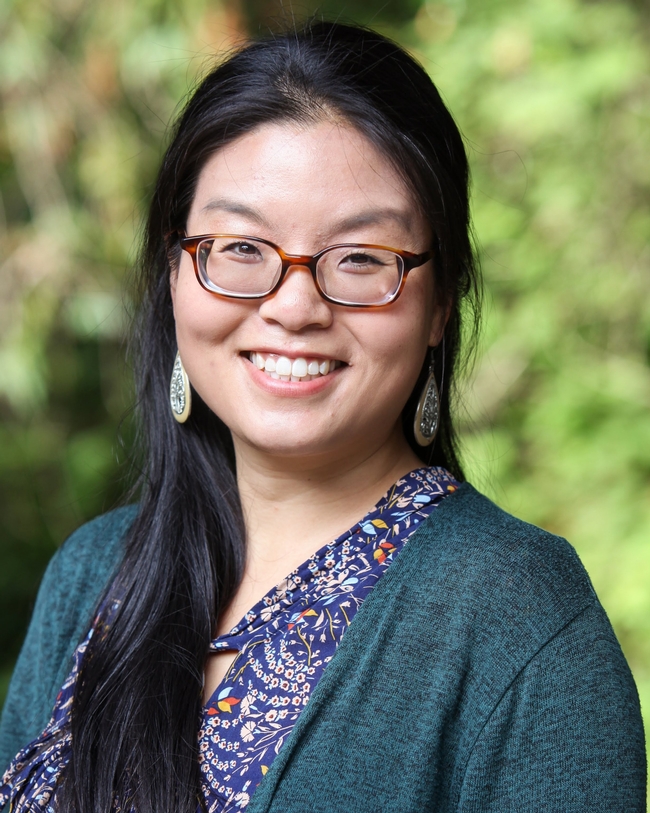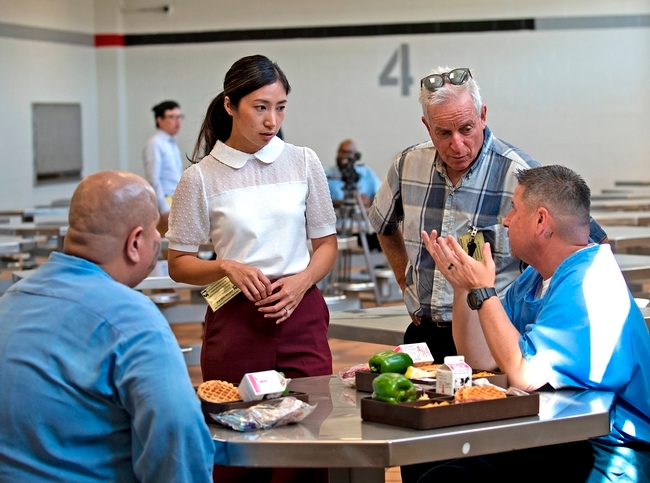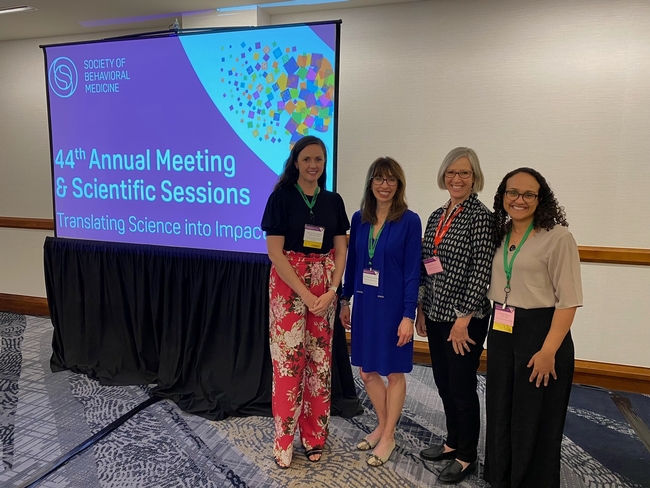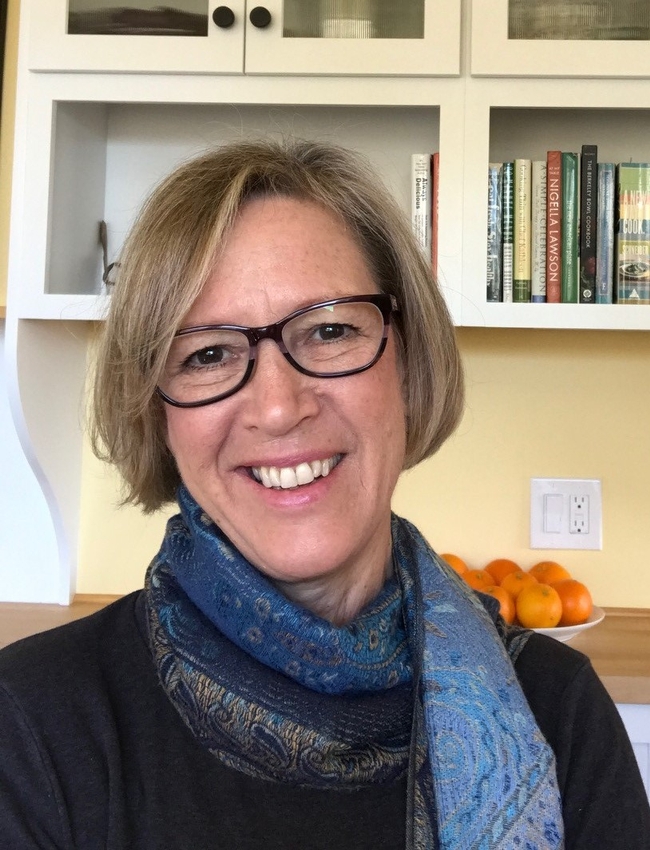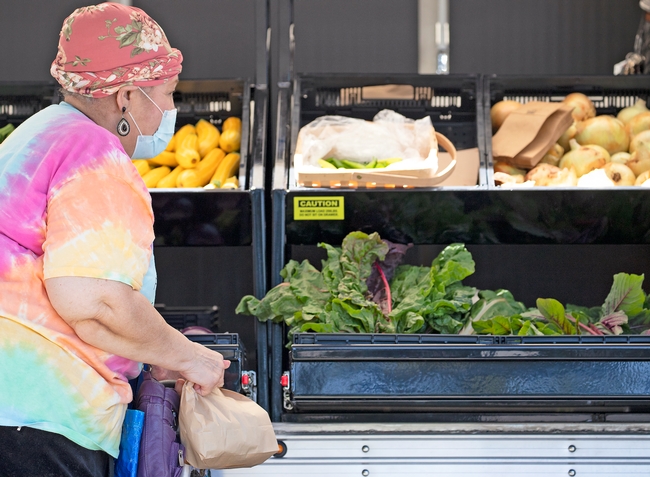Posts Tagged: nutrition
‘Super Carbolicious’ 4-H Food Fiesta challenges young chefs
Inside a quiet classroom, Sadie, a 4-H member in Orange County, stands in front of two judges with an insulated cooler bag in hand. From it she pulls out plates, utensils and napkins and sets them down on the table. She unzips the bottom compartment and carefully reaches for a cast iron platter with golden fluffy pancakes piled on top.
“Would you like syrup with your pancakes? I highly recommend it,” said Sadie, an eighth grader who is participating in the annual 4-H Food Fiesta for a second time.
4-H, a youth development program supported by the University of California Agriculture and Natural Resources and administered through local UC Cooperative Extension offices, promotes hands-on experiential learning for all youth.
Rita Jakel, 4-H program coordinator for Orange County, described the Food Fiesta event – intended for ages 5 to 18 – as an opportunity to practice and showcase public speaking skills through a fun, food-related competition.
Youth present their creations before a panel of evaluators, who ask them to describe how they prepared the dish and why, and how they managed challenges throughout the process. The interaction between youth and adult leaders provides a unique opportunity for youth to practice career readiness skills such as job interviews and public speaking.
This year's theme was “Super Carbolicious” and 4-H participants were encouraged to make their favorite dishes using ingredients like pasta, potatoes and bread. Carbohydrates are often perceived as unhealthy, which is not a helpful mindset to have when teaching youth about nutrition. Carbohydrates provide the body with glucose, which is converted into energy that people need to function throughout the day.
Some of the dishes that were presented during the Food Fiesta included chocolate chip banana bread, cheesy baked potatoes, cookies and Nutella-stuffed crepes. 4-H member Kaitlin had only ever attended the Food Fiesta to cheer on a friend. This year, she decided to participate and presented pumpkin macaroni and cheese as her entry.
“Pumpkin mac and cheese is better than the regular one because there's a lot more flavor and you have to use two cheeses: cheddar and parmesan,” explained Kaitlin, a seventh grader. When asked what motivated her to participate instead of a being a bystander this time around, Kaitlin said that she wanted to work on her presentation skills.
“Usually, I'm a bit shy and I don't like to share that much. The Food Fiesta helped me practice speaking up more so that I can accomplish my goals,” Kaitlin said.
Sadie, who loves public speaking, admits that it wasn't always a strength of hers. “There was a time when I hated public speaking. But when I joined 4-H's cake decorating, poultry and food fiesta events, I got more comfortable with public speaking,” she said. “Now, I like going to events and showing off. I get to show off turkeys, my cakes and, today, I presented homemade pancakes.”
Helping to keep the day's festivities running smoothly were two 4-H state ambassadors: Michaela and Laurelyn, two high school seniors. Both have been involved in 4-H for over nine years, with Laurelyn being a third-generation 4-H member. “My grandmother grew up in a 4-H club in Orange County. She still raises breeding lambs for 4-H members to this day,” said Laurelyn, whose mother was a 4-H member in San Joaquin County.
As state ambassadors, they are responsible for creating and presenting workshops during state, national and regional events. “We also engage the public via social media, specifically TikTok and Instagram (@4horangeco),” said Michaela, who is in her second year as an ambassador.
During the Food Fiesta, Michaela and Laurelyn made themselves available to answer questions from participants and their families. Both ambassadors agreed that seeing parents involved in 4-H should not come as a surprise. “Being in 4-H is a family effort. This isn't an extra-curricular where you just drop your kids off and leave,” said Michaela.
Laurelyn shared that the biggest misconception others have about 4-H is that they think it's about introducing youth to agriculture or livestock. There's a civic engagement and leadership component to it, too. “If parents knew about all the ways 4-H can benefit their kids, I think more people would want to join us,” she said. “And they're finding fun ways to help us learn life skills, like this Food Fiesta.”
The homemade dishes weren't the only thing to look forward to, however. In another building, Sandy Jacobs, volunteer event coordinator, and her team set up a kitchen quiz for members. On several tables, there were different cooking tools and participants were challenged to name as many tools as they could.
In another classroom, while some members were presenting food, others presented their themed table setting décor. Participants had to prepare a complete table setting entry including a menu card, centerpiece and table settings for two. Judges considered creativity, use of color, table setting etiquette, knowledge in talking to the judges, and appearance in their evaluation.
Finally, to wrap up the day, members competed in a cupcake decorating competition. Participants were responsible for bringing their own supplies including tools and edible decorations for Cupcake Wars. Depending on their age group, participants had 20 minutes to decorate two to four cupcakes, each of a different theme.
To learn more about 4-H in Orange County, visit https://oc4h.org/.
NPI researchers find school recess varies with school size, family income
New law mandates at least 30 minutes of recess for K-8 public school students
Last year, while working on a bill that would require California public schools to provide at least 30 minutes of recess, State Sen. Josh Newman sought the latest research on youth physical activity. Newman, whose district encompasses parts of Los Angeles, Orange and San Bernardino counties, traveled to the Bay Area to see one of the leading experts in the field.
During several visits with Newman, Hannah Thompson – a Nutrition Policy Institute senior epidemiologist and an assistant research professor in the University of California, Berkeley School of Public Health – shared the most recent science.
Both the American Academy of Pediatrics and Centers for Disease Control and Prevention recommend that children have 20 minutes or more of daily recess. But, when asked about the current “state of recess” across California, Thompson said she only knew of anecdotal evidence at the state level.
“I said, ‘You know what? I don't actually know what is going on in California,'” Thompson recalled. “I contacted a couple of colleagues who had done more national-level work on recess that included samples of California schools – but no one was really able to disaggregate what was happening in California.”
She brought up the bill during a meeting with her fellow researchers at NPI, an institute under UC Agriculture and Natural Resources.
And it turned out that Janice Kao, an NPI academic coordinator, had exactly what she needed.
CalFresh Healthy Living evaluation team provides key recess data
Kao leads a project team that evaluates local health departments' programs of CalFresh Healthy Living – California's version of the educational arm of SNAP (the federally supported Supplemental Nutrition Assistance Program).
As part of that evaluation process, Kao's team coordinates questionnaire administration at SNAP-Ed-eligible schools that are partnering with local health departments on CalFresh Healthy Living interventions, ranging from nutrition programs to physical activity initiatives. The survey asks school administrators about their current policies, environments and practices – including the provisioning of recess.
“It was just really good luck that everything was in the right place at the right time to be able to work together,” Thompson said.
At Thompson's request, Kao and her colleagues processed and cleaned that crucial piece of data, comprising responses from 153 low-income elementary schools in the 2021-22 school year.
“Just 56% of schools reported providing more than 20 minutes of recess daily,” Kao said. “So this was a situation where the data showed, ‘OK, there is some room for improvement, perhaps at that state policy level.'”
Thompson and Rebecca London, a sociologist at UC Santa Cruz, wrote a research brief detailing their analysis of the data. They describe disparities in recess time based on school size and income level of families, with students in larger, less affluent schools generally receiving less daily recess.
Thompson said those disparities are related to funding and academic inequities, as the imperative to boost test scores forced schools to increase certain classroom hours at the expense of recess time.
“We did all this work engineering physical activity out of the school day despite the tremendous body of evidence that shows physically active kids not only are healthier but can concentrate better; they have better academic performance, fewer disruptions, better classroom behavior,” explained Thompson, a former physical education teacher in Oakland. “In trying to address that academic gap, we ended up exacerbating a lot of these public health disparities.”
Virtual learning during the pandemic showed educators and parents – firsthand – the harmful effects of children staying sedentary in front of computer screens for hours. But the resulting momentum for restoring recess and time for physical activity was soon stalled as schools tried to make up for “lost time” in returning to classrooms, Thompson said.
NPI resources, expertise invaluable to lawmakers
Newman's bill, SB 291, was an attempt to lock in those recess minutes that are crucial for student health, development and scholastic performance. Both Thompson and London testified before the Senate Education Committee in April 2023, providing the senators with science-based information and context to guide their policymaking.
“Crafting policies rooted in science is critical for legislators to ensure our policies are impactful,” Newman said. “The work of Dr. Thompson and her colleagues at UC provided clear and useful guidance on the benefits of unstructured play and how to improve health and educational outcomes in California schools.”
Gov. Gavin Newsom signed SB 291 into law last October. Starting this coming school year, public elementary and middle schools across California will be required to give at least 30 minutes of recess to K-5 students – and prohibited from withholding recess as punishment.
Kao said her team was excited that their CalFresh Healthy Living evaluation data was useful for lawmakers, illustrating NPI's important role in informing evidence-based policy.
“I'm hopeful that we can use this same data set to also provide key pieces of information on other types of legislation that's in the works, or newly passed legislation,” Kao said.
Thompson said the challenge now will be ensuring schools have the resources and funding to provide quality time for young people.
“If you only have one schoolyard, and it's already dedicated to PE, what do you do now, if you have to increase your time for recess and you don't have that space?” she said.
Thompson added that she is currently applying for a grant to study how schools across California are adjusting to meet the new requirements.
Food waste, nutrition in prison focus of webinars Feb. 22, 29
Free webinars about food waste and nutrition in correctional systems will be presented by the University of California Agriculture and Natural Resources.
The UC ANR Sustainable Food Systems Emerging Issues Webinar Serieswill first cover food waste on Feb. 22.
“The Sustainable Food Systems strategic initiative panel aimed to highlight innovative solutions to emerging issues within the food system from field-to-fork,” said Danielle Lee, UC Nutrition Policy Institute director of communications and research engagement.
“Over one-third of all available food in the U.S. is uneaten through food loss or waste – totaling up to over $160 billion – which has negative impacts on food security and the climate,” she said. “Households could save over $370 per person each year by reducing or preventing food waste. Additionally, when uneaten food ends up in the landfill, it generates greenhouse gases, and landfills are now the third largest producers of methane in the U.S.”
“California's adoption of SB 1383 aims to solve these problems,” Lee said. “You'll meet experts who are implementing consumer education and organic waste recycling programs aligned with SB 1383.”
The second 90-minute webinar, on Feb. 29, will focus on nutritious foods for residents of correctional facilities.
“We chose incarcerated people as our case study population for two reasons – the California Department of Corrections and Rehabilitation is the single largest public purchaser of food in the state and studies have shown that 63% of incarcerated individuals rarely or never have fresh vegetables and 55% rarely or never have fresh fruit.”
California has two policies that can support institutional procurement of fresh produce – AB 822 and AB 778.
“The Harvest of the Month program is an innovative solution to implementing these policies while supporting improved nutrition security for incarcerated individuals,” Lee said. “Prison gardening programs can not only provide therapeutic benefits to residents, but also reduce recidivism rates and serve as workforce development opportunities to better prepare residents for returning to their communities post-incarceration.”
Part 1 - Harvesting Solutions: A Trio of Perspectives on Addressing Food Waste from Field to Fork
Thursday, Feb 22, at 10-11:30 a.m. PT
To minimize food waste, three experts explore factors influencing food loss and waste, delve into innovative recycling techniques, and explore statewide initiatives targeting household food waste. Experts in postharvest handling, food waste recycling and community education will share research findings and strategies.
Agenda:
- An overview of food waste in fruits and vegetables
Deirdre Holcroft, Holcroft Postharvest Consulting - Exploring means to extract embodied energy and lower greenhouse gas emissions in food waste recycling
Michael Cohen, UC Cooperative Extension organic materials management and agri-food systems advisor for Santa Clara County - The opportunities in statewide programs in reducing household food waste: Results from UC ANR household food practice needs assessment
Yu Meng, UC Cooperative Extension youth, family and community advisor in Riverside, San Bernardino and Imperial counties
Part 2 - Farm to Corrections: Cultivating Justice through Nutrition and Gardening Initiatives
Thursday, Feb. 29, at 10-11:30 a.m. PT
Experts share insights on groundbreaking initiatives for justice-involved individuals' access to California-grown produce and nutrition and gardening education. Innovative initiatives such as a “Harvest of the Month” program by the California Department of Corrections and Rehabilitation in collaboration with the UC Nutrition Policy Institute and Impact Justice aim to increase access to fresh, locally grown fresh fruits and vegetables and trauma-informed nutrition workshops. They also highlight the impact of UC Master Gardener projects on rehabilitation and workforce development.
Agenda:
- Produce during and after prison: Increasing justice-impacted individuals' access to California-grown produce and nutrition education
Carolyn Chelius, UC ANR Nutrition Policy Institute; Heile Gantan, Impact Justice; Lance Eshelman, California Department of Corrections and Rehabilitations - UC Master Gardeners Prison Gardens Projects
Missy Gable, director of the UC Master Gardener Program
Learn more and register at https://ucanr.edu/sites/StrategicInitiatives/Sustainable_Food_Systems/Events.
Rauzon, visionary in community health evaluation, retires from NPI
Nutrition Policy Institute researcher developed techniques that help identify effective public health programs
When Suzanne Rauzon and May Wang were in the master's of public health program at the University of California, Berkeley during the mid-1980s, Wang knew that her classmate had unique brilliance to bring to their field.
“You know how you vote for the person in high school who's most likely to succeed? That was Suzanne,” said May Wang, a professor of community health sciences in the UCLA Fielding School of Public Health. “Suzanne was always ahead of every one of us; she was so visionary and forward-thinking and I think we were all – to be honest – a little bit in awe of her.”
Decades later, as Rauzon prepares to retire in January 2024 as director of community health at the Nutrition Policy Institute, she has fulfilled that exceptional promise. Her many contributions are helping communities identify the most effective programs to benefit public health.
Lorrene Ritchie, director of NPI (an institute under UC Agriculture and Natural Resources), said that Rauzon has played a pivotal role in translating research findings into community action and policy change. She added that Rauzon has brought an extraordinary combination of strategic vision for the overall direction of nutrition studies and tactical savvy to anticipate the needs of project funders and communities.
“Few people can bring both of those skills – efficiently complete the day-to-day tasks as well as be a big-picture thinker,” Ritchie said. “She has been so instrumental in contributing to NPI's impacts.”
A unique skill set to tackle complex challenges
Part of what makes Rauzon unique in her field is her extensive experience in the private sector. After attaining her master's degree, Rauzon developed a comprehensive employee worksite wellness initiative at a telecommunications company – a new set of programs that led the field in the 1990s.
“Suzanne was, is and has always been very visionary,” Wang said.
After years in the corporate space, however, Rauzon leaped at the chance to return to academia (and reunite with Wang) in 2001 at UC Berkeley's Center for Weight and Health, a precursor to NPI. Working with center co-director Patricia Crawford, Rauzon said the project to investigate the effects of sugar-sweetened beverages was a “perfect fit” for her.
Concerned with rising childhood obesity, the researchers studied the significant differences in health outcomes for students in high schools that limited access to beverages such as soft drinks, versus schools that did not.
“That field in general – looking to limit sugar-sweetened beverages – started with a focus in schools, and expanded into other environments (such as college campuses) over the years, and has continued to be a focus in public health,” Rauzon said, “all the way up to work now on limiting sugar-sweetened beverages access in other public institutions.”
Rauzon's change-management and communication skills also were crucial in studying the revolutionary School Lunch Initiative in the Berkeley Unified School District – a collaboration with chef Alice Waters' Chez Panisse Foundation and the Center for Ecoliteracy to engage young people in the growing and preparation of food. Brought in to evaluate the efficacy of the program, Wang and Rauzon found they had to alter their mindset and methods when working with partners who were responding to oft-changing circumstances.
Rauzon's cross-sector perspective, practical know-how and people skills in cultivating positive relationships with district staff and educators were instrumental in successfully completing studies with as much rigor as possible in real-world settings such as schools.
The researchers created new analytical tools to evaluate health interventions developed by communities themselves – as opposed to programs engineered by academics and applied to community members with the expectation that they would accept it.
“Most researchers, to be honest, are still striving to do that with communities,” Wang said. “It is an incredibly challenging task because communities will do what they want to do – and what they need to do – to respond to the needs of people.”
Wang, who now trains academics in community-based participatory research, said that the ground-up paradigm has been shaped by Rauzon's thinking. “A lot of the ideas I have today really came about from our work together on the School Lunch Initiative,” Wang said.
A legacy of new methods, mentoring early-career professionals
One of Rauzon's longest-running – and most complex – projects has been the evaluation of community health interventions across the country, including a variety of Kaiser Permanente initiatives to promote healthy eating and physical activity.
“What was interesting about that work was we really were trying to understand the combined effects of doing a lot of different things that are related – and to see the overall effect that can have on the community,” said Rauzon, noting that interventions ranged from nutrition classes to policy changes to park and bike-safety improvements.
Wang said some of their findings, particularly from one study in Los Angeles County, suggest that effective programs are early childhood interventions (including an emphasis on breastfeeding), home visitations by nurses and social workers to vulnerable households, and partnerships with retailers to make healthy food choices more accessible.
In the process, the researchers helped pioneer new research tools – including interdisciplinary “systems mapping” approaches in which computer scientists discern linkages among various programs and their effects, and the highly influential “community intervention dose index” concept that can be used to evaluate multiple intervention strategies within a community.
In addition to Rauzon's contributions in research and evaluation, Ritchie also highlighted her role in supervising and mentoring students and NPI staff and researchers during her 20-plus years with the UC – the role in which Rauzon takes the most pride.
“While I made a contribution to community health in effective interventions and how to measure them,” Rauzon said, “I would say personally the most rewarding part of the work I've done over the last couple of decades is seeing the growth and development and advancement of people who have worked for me and who have really taken off in their own careers – that to me has been immensely satisfying.”
As an emeritus researcher, Rauzon will continue to support NPI professionals and their research, and she added that she's excited to embark on a new partnership – with her husband, a geographer – to mitigate impacts of climate change on human and environmental health across the globe.
People interested in supporting Rauzon's legacy and the ongoing work in health and nutrition can donate to NPI's Student Fellowship, which provides students from underrepresented groups the opportunity to work on NPI research and be mentored by NPI researchers.
Locally grown produce prescribed as part of diabetes treatment
UC Cooperative Extension specialist to evaluate effects of improved access to fruits and vegetables and health education
Health and nutrition experts generally recommend that all adults fill half their plates with fruit and vegetables as part of a healthy meal. For adults with diabetes, those fruits and vegetables have an added benefit: recent research suggests that including produce as a part of their care plans can lead to improvements in hemoglobin A1C and blood pressure.
To help improve these key clinical outcomes, doctors and medical professionals in Yolo County will begin to provide locally grown fruits and vegetables to more than 500 patients with prediabetes, types I and II diabetes and gestational diabetes through a new Produce Rx program. The project is funded by the United States Department of Agriculture and administered by CommuniCare+OLE, a network of 17 federally qualified health centers that serve medically underserved areas, regardless of the patient's ability to pay.
For the program's pilot year that began in May 2023, 112 participants are receiving access to an average of $70 worth of produce every month for six months, which is paired with monthly educational activities. Susana Matias, a professor of Cooperative Extension in the UC Berkeley Department of Nutritional Sciences and Toxicology, will partner with CommuniCare+OLE to evaluate outcomes as the program expands through the end of 2025.
“We are very excited about this project because it addresses a major social determinant of health: access to healthy food,” she said. “Our role in the project is to build evidence about the impact of this type of program, which is critical for scaling up.”
“Having consistent access to fruits and vegetables and health education support may affect patients' health and well-being,” Matias added. She will work with undergraduate and graduate students at UC Berkeley and UC Davis, as well as postdoctoral researcher Caitlin French, to ask each patient about their produce consumption habits at the beginning and at the end of their participation in the program. Those responses will be analyzed to determine if improving this access resulted in significant changes among patients. Matias also will track how average blood sugar level and household food-security change throughout the program.
Other Produce Rx project partners include the Davis Farmers Market, the Center for Land-Based Learning's Mobile Farmers Market, and Spork Food Hub.
Learn more about Produce Rx at the CommuniCare+OLE website.

